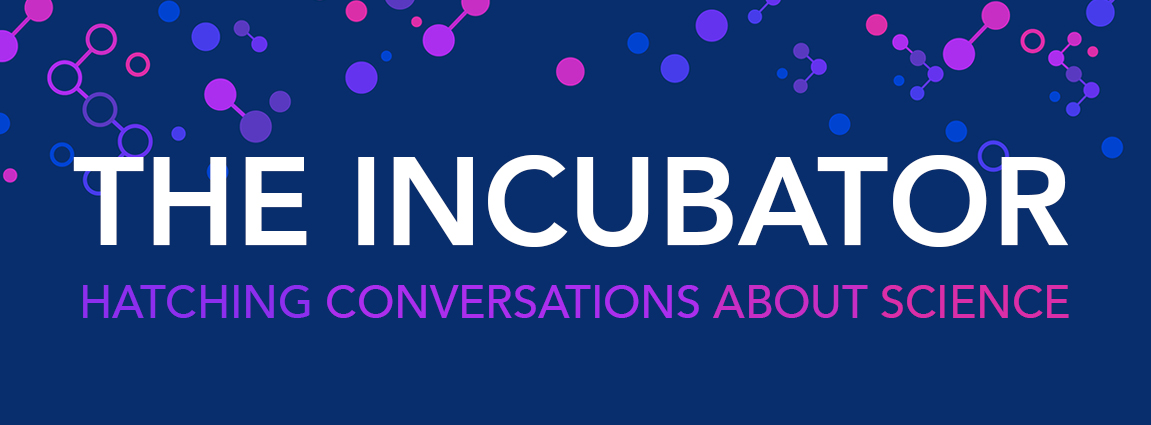Creating a New Identity: Transitioning from Research to Outreach
The following series is based off The Rockefeller University Science Outreach Program’s presentation at the annual AAAS meeting, presented in San Jose, CA by Jeanne Garbarino, Elizabeth Waters, and Ali Cohen. The goals for this presentation and blog post series are to introduce science outreach, how to get started in science outreach, and how to leverage science outreach for professional development.

Written by Elizabeth Waters, PhD, Lead Scientist for The Rockefeller University Science Outreach Program
You are s scientist who is transitioning into a career in science education, and you find the advertisement for your dream job:
- A PhD in education, science, technology, or math preferred;
- A track record in innovative and results-oriented leadership;
- Exceptional written and oral communications skills;
- Knowledge of education best practices from across various STEM disciplines; understanding of diverse pedagogical approaches to education, familiarity with learning styles and developmental stages; an ability to bring to bear a broad range of educational tools and methods; facility with creating innovative, personal, and high-touch educational experiences for diverse audiences;
- A network and working relationships in the STEM education sector;
- Specialization in one or more STEM domains: education policy and reform (NGSS); multilateral partnership building; curriculum development; or digital learning platforms;
- A record of success in leading cross-disciplinary teams, including attracting and retaining talented STEM staff.
(Adapted from Liberty Science Center, VP STEM Education)
How do you get the job? Are you ready for it? Regardless of where your career interests lie, making the leap takes some thought. It might not always be apparent how to actually make the transition, but job advertisements can serve as road maps to help plot your path for a career change. Here are some ways you can package yourself as a competitive applicant in the area of science outreach and education:
Show evidence of skills
When going out on the job market, it is useful to assess what skills were gained from your research experience. Being able to identify your “transferable skills” will help you market yourself, and are probably related to things you already do in the lab — writing grants and progress reports, presenting at departmental meetings and conferences, and mentoring or teaching junior students. However, experiences in the laboratory are not enough — you also need to go outside university realms to get experience in formal and informal education. When looking to transition into science outreach, it is important to build a portfolio of skills and products that science outreach programs are seeking. These include:
| Desired Skill | Related Experiences |
| Communication | Annual reports, successful grant applications, presentations |
| Management | Strategic planning, budget proposals, program evaluation plans |
| Curriculum Development and Teaching | Materials describing a program/course you developedStatement of management/ teaching philosophy and/or approach to partnership buildingCurriculum examplesTeaching reviews or program evaluations |
Establish a community presence
If you’re going to work in science outreach or informal education, you need to advertise your skills and interest. You also need to understand what educators, parents, and young people are looking for in an out-of-school experience. In addition to actually gaining the skills required for a career in science outreach, it is equally important to let others know where your career interests lie.
Volunteer
You’ve probably been doing this and loved it, since you’re considering a career in science outreach. Use volunteer work as an opportunity to take on a leadership role, create or manage an event, teach a class, or collaborate on content development.
Network
Networking shows that you are genuinely interested in the field. Networking can also serve as a means to confirm that this is the right move for you. Seek out the places where informal education occurs in your community: schools, libraries, museums, colleges, or civic buildings. But also be sure to seek out opportunities through friends, alumni organizations, meetup.com and professional organizations.
Twitter, Facebook, and Instagram
Social media is another way to meet people who are also interested informal education, learn about current events in education and science, and interact with people interested in learning more about science. Use these platforms to establish a presence for yourself as a science educator. Keep your posts limited to the topics about which you are passionate, and relate to the brand that you are trying to build as a science educator. Remember that you are constantly making a first impression.
Blogging
Science outreach and communication is less about what you know and more about how you convey your excitement for science. Write regular blog posts about your science education experiences, pen articles for non-scientists, and/or include reflections on volunteering.
Use your authentic voice
It is never a good thing to try and be someone you are not – that can get exhausting, and fast. When speaking to others about science and science education, being genuine can take you far. Think about how you can incorporate your authentic voice into your work:
Why are you passionate about this field?
What have you done in science research, education or outreach that confirmed your interest? How do you identify with different types of learners?
Who inspires you?
In science research, your role models might be the thought leaders in your field, Nobel Prize winners, or charismatic scientists. Science outreach engages non-scientists so look outside education and science for inspiration, or toward people that express a unique perspective or worldview. How do musicians, writers, software developers, chefs (etc..) create new ideas and products but still express their unique voice?
How do you approach being a creator, contributor, or collaborator?
When you join an institution or program you will work to grow their mission. How can your ideas about science outreach contribute to the success of their programs? Where do you see potential for growth? Who will be your partners? What is the role of scientists in education? How are you authentic in your interactions with others? Finding the answer to these questions can help you find a clear path to how you can insert your voice effectively into the conversation.
Read More:
- Leveraging Science Outreach for Professional Marketability
- So You Want To Do Science Outreach: Getting Started
- Doing Science Outreach: The Basics
- My Graduate Career: How one student is using science outreach for professional development
Coming Up:
- Introducing Neuroscience With Jelly Beans: A low energy and inexpensive lesson anyone can do

3 thoughts on “Creating a New Identity: Transitioning from Research to Outreach”